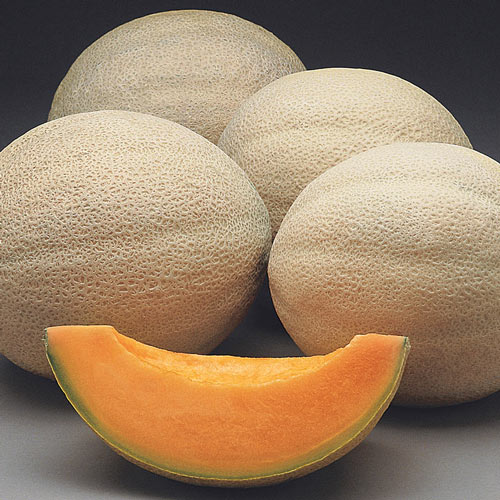 Cantaloupe is a large, orange-fleshed fruit that looks just as great as it tastes! Also known as rockmelon and muskmelon, cantaloupe belongs to the family Cucurbitaceae and is a wonderful choice for every home garden. Full-grown fruits can weigh 1.1 to 11 lbs and are a rich source of potassium, vitamin C, dietary fiber, and antioxidants. Take a look at the essentials of growing cantaloupes from seed.
Cantaloupe is a large, orange-fleshed fruit that looks just as great as it tastes! Also known as rockmelon and muskmelon, cantaloupe belongs to the family Cucurbitaceae and is a wonderful choice for every home garden. Full-grown fruits can weigh 1.1 to 11 lbs and are a rich source of potassium, vitamin C, dietary fiber, and antioxidants. Take a look at the essentials of growing cantaloupes from seed.
You can start cantaloupe seeds indoors 25-30 days before the last frost date for your region. Fill the tray with sterile seed starting mix and plant cantaloupe seeds. For information about the right planting depth and spacing, refer to the instructions on the seed packet. Water the mix after sowing the seeds and place the tray or pot near a sunlit window. You can also use artificial lighting apparatus to warm the seeds. Continue irrigating the seeds on a daily basis.
Cantaloupe seeds usually take about 6-7 days to germinate. Once the seedlings develop a couple of pairs of leaves, you can start acclimatizing them to the garden conditions. Start hardening off cantaloupe seedlings by placing them at a sheltered spot of your garden for a couple of hours. Over the next 8-10 days, gradually add to the time that the seedlings spend outdoors. Once the day temperature tops 70 degrees Fahrenheit, you can transplant the seedlings.
Prepare the bed by clearing out all weeds and debris and add plenty of organic compost to the soil. Allow a gap of 2-4 feet between the seedlings and a separation of at least 4 feet between the rows. Water thoroughly after you finish planting.
Cantaloupes require a couple of inches of water every week. Applying a 2-3 inch layer of organic mulch will help retain soil moisture and is therefore recommended. Fertilize cantaloupes once the vines develop runners. Make sure the fertilizer doesn’t come in direct contact with the plants.
Growing cantaloupes is almost as much fun as eating them. I’d suggest you start right now!

